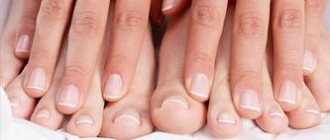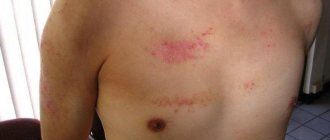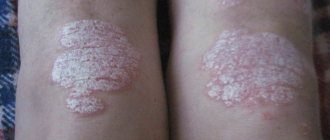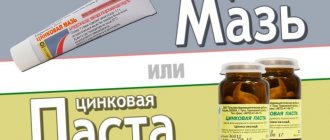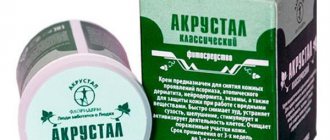Why does it arise?
The causes of pustular psoriasis are not precisely understood. The main symptom of the disease is disturbances in the division of skin cells, resulting in scaly and papular elements of the rash. The trigger mechanism can be various factors:
- endocrinological disorders;
- severe stress;
- prolonged exposure to open sun;
- postpartum period;
- reduced immunity;
- constant trauma to the skin;
- hereditary factor.
To choose the right course of treatment, it is important to find out which factor served as the trigger for the development of the disease.
Physiotherapy
Ultraviolet irradiation is the most common method of therapy. Ultraviolet light in a certain spectrum and dosage can dry out the elements of the rash, have a cytostatic effect and accelerate skin cleansing. Among other things, UV rays strengthen local immunity.
Fact! When prescribing physiotherapy, the doctor takes into account the patient’s age and dermis type. For people with lighter skin, prolonged exposure to the sun is contraindicated; procedures are carried out for a shorter amount of time.
Causes of appearance and provoking factors
Pustular (translated from Latin pustule - “pustule”) form of psoriasis more often (in 60% of cases) occurs against the background of an ordinary (vulgar) disease. The exact reason for the progression of the problem has not yet been established.
Nevertheless, scientists identify a number of factors that provoke the development of this form of psoriasis:
- Hormonal imbalance in the body.
- Excessive exposure to direct sunlight.
- Injuries, infectious skin lesions.
- Decreased calcium concentration in the blood.
- Long-term treatment with hormonal ointments, salicylic acid.
- Concomitant liver damage, among which obstructive jaundice is most often noted.
The more factors simultaneously affecting the patient, the higher the chance of developing pustular psoriasis.
In 40% of cases of pustular psoriasis, it is preceded by the usual, vulgar form. Let's consider the sequence of reactions occurring in the skin, which determine such a development of events:
- Immune system dysfunction. T lymphocytes (killer and helper cells) penetrate the epidermis. There they provoke a massive release of inflammatory mediators, which cause the occurrence of the phenomenon.
- There is a disorder in the functioning of keratinocytes. They stop ripening, but quickly divide. Their proliferation begins and, in parallel, leukocytes, macrophages and dendritic cells migrate into the epidermis, aggravating the course of the disease.
This is how common psoriasis develops. The pustular form is additionally accompanied by the appearance of specific bubbles with liquid inside. When they are damaged, a bacterial skin infection with characteristic symptoms occurs.
According to medical statistics, in 40% of cases the disease occurs in completely healthy people for unexplained reasons. In another 60% of patients, it develops in response to improper treatment of conventional forms of psoriasis and is localized in the same affected areas.
Prevention measures
There is no specific prevention of pustular psoriasis. Experts cannot yet understand what provokes its appearance, so doctors today are formulating general recommendations that should be followed by all those who have a history of predisposition to skin pathologies of this type
Important:
- Protect your body from direct sunlight and insect bites.
- Give up bad habits: smoking and alcohol disrupt the normal functioning of the body and reduce the functioning of the immune system.
- Avoid stress and emotional overload.
- Maintain a work and rest schedule.
- Adjust your diet to include foods high in vitamin D.
- Combat dry skin with moisturizing creams.
- Avoid contact with household chemicals.
The listed preventive measures cannot replace drug treatment; they can complement it, prolong the period of remission and prevent the occurrence of a new attack of exacerbation.
Types of pustular psoriasis
Based on the extent of damage to skin areas, the disease is divided into localized and generalized forms. Generalized psoriasis manifests itself as a pustular rash that can appear all over the body. The pustules merge and form large-scale oozing. This type includes:
- Tsumbusch psoriasis.
- Acrodermatitis Allopeau begins from the tips of the fingers and toes, gradually moving to the palms and soles.
- Impetigo herpetiformis. May appear during pregnancy on the inner thighs, under the breasts.
Generalized pustular psoriasis appears abruptly, the rash is hot to the touch. This form may be accompanied by elevated body temperature and aching joints.
Localized psoriasis often lasts a long time, and its elements are difficult to treat. Constant walking, sweating feet, washing hands - all this does not have the best effect on drying out the elements of the rash. This type of pathology includes:
- Localized Allopo's dermatitis (the affected area is the pubic area).
- Barber's pustular psoriasis. Favorite places for localization are the feet and palms, which prevents a person from working.
During an exacerbation of the disease, the patient is required to issue a sick leave certificate.
Stages of palmoplantar psoriasis
The disease has three main stages:
- Progressive or initial. The rashes are just starting to appear. At first - in a small amount, which gradually increases. Sometimes they can combine into larger entities. The patient is bothered by intense itching. You can see a photo of the initial stage of psoriasis on the palms.
- Stabilization stage. The rash stops developing, but does not disappear. The itching becomes less intense. The bright shade of the formations is replaced by a paler one.
- The final stage. The itching completely disappears. The volume of rashes decreases. Therapy becomes supportive or stops altogether.
Psoriasis of the palms has the same stages of development as that of the soles. With each relapse, all three stages are repeated.
Forms and types of pustular psoriasis
Today, we are considering a localized type (occurs in certain areas of the body, occurs more easily) and a generalized type (affects large areas, poses a real threat to human life), which have different manifestations.
For example, among cases of pustular localized psoriasis there are:
- Barber's pustular psoriasis;
- localized acrodermatitis Allopeau;
- psoriasis with pustulation.
Common generalized psoriasis is represented by:
- herpetimorphic imetigo;
- persistent acrodermatitis Allopeau;
- pustular psoriasis of Tsumbusch.
Barber syndrome has another name - palmar-plantar pustular. It was once described in detail by the Englishman Barber. With this type of disease, the rash occurs in the recesses of the palms, on the bends of the fingers, and on the soles. Due to the fact that the skin here is denser, the pustules lie deeper than usual, for example, on the soles of the feet.
An extremely severe form of the disease is Tsumbusch psoriasis. The Austrian dermatologist Zumbusch had relatives who suffered from this type of psoriasis. Therefore, he had the opportunity to study and describe the disease in detail.
Characteristic features are:
- rapid onset - significant lesions appear in just a few hours;
- skin manifestations include inflamed areas separated from healthy skin by raised areas;
- high body temperature, fever;
- pain in muscles, joints;
- general weakness.
Over time, the bubbles that appear in hyperemic areas merge and form so-called purulent lakes. They transform into dark crusts, after removal of which ulcers and erosions do not heal for a long time. This, however, does not mean that pustular psoriasis is localized. The lesion can spread to the scalp, face, and mucous membranes.
The affected areas of acrodermatitis Allopeau are the hands and soles. The rashes first merge into a single whole, then burst. As a result, purulent crusts appear on the skin, covering erosions. Over time, the skin atrophies and scleroderma-like surfaces appear.
In the second half of pregnancy, women may be attacked by hermetimorphic impetigo. Suddenly, pustules appear on the back of the head, neck, and groin and merge in a short time, forming plaques of various configurations. They do not itch, but there is greenish pus inside. After the pustules open, there are no scars or pigmentation left. An additional symptom of pustular psoriasis is damage to the mucous membranes.
In addition to obvious manifestations, generalized forms lead to renal failure, thrombophebitis, and hypocalcemia (calcium deficiency, which causes teeth to crumble and fall out).
Localized acrodermatitis Allopo, as a rule, appears along with signs of vulgar, that is, translated from medical, ordinary psoriasis.
Stages of disease development and severity
Doctors distinguish four stages of pustular psoriasis, each of which is presented in the table:
| Stage number | Name | Description |
| №1 | Initial | Characterized by the appearance of redness. General health, as a rule, does not change. |
| №2 | Progressive | Pustules spread over the entire surface of the skin; they can merge into large pustular lesions. |
| №3 | Stationary | The pustules no longer spread. The first sign of regression appears - Voronov's pseudoatrophic rim. |
| №4 | Decaying | The pustules become flat and change color from red to flesh-colored. |
As for the severity of pustular psoriasis, there are only three of them:
- Easy. The affected area in this case is limited to small lesions, there are no symptoms of intoxication of the body, and the general condition does not change.
- Average. The pathology tends to spread, inflammation is pronounced.
- Heavy. It is characterized by total damage to the skin, symptoms of intoxication of the body are noticeable, and a secondary infection occurs. In extreme cases, death cannot be ruled out.
Psoriasis of the palms and soles of Barbera
This form of psoriasis is characterized by the appearance of pustules and pustules against a background of red spots, but the contents of the pustules are sterile. First, a yellowish rash appears on the arches of the feet, gradually covering larger areas of the skin. This type of pustular psoriasis is shown in the photo.
Soon the pustules begin to burst when walking, and the person feels great discomfort and pain. Only after a while do the papules become crusty and the red spots become brighter. Now the pain is replaced by severe itching, because the opened pustules often become inflamed due to an attached bacterial or fungal infection.
The cycles of the disease may depend on the time of year, exacerbation may be followed by long-term remission. Most often, the disease affects people aged 23 to 55 years.
Possible complications and consequences
Palmoplantar psoriasis, in the absence of timely treatment and preventive measures, can cause a number of complications:
- cardiopulmonary failure;
- sepsis (develops due to bacteria entering wounds);
- depression;
- insomnia;
- social phobia;
- psoriatic arthritis.
The most severe form of complication that PP can cause is psoriatic erythroderma.
As a rule, it appears in those patients who neglect timely treatment. With this complication, chaotic psoriatic rashes resembling burns appear on the patient’s skin. This manifestation requires immediate medical intervention.
Methods for diagnosing the disease
Diagnosis of pustular psoriasis should be made by a dermatologist. This will help avoid misdiagnosis and, consequently, inappropriate treatment.
Only a specialist dermatologist can distinguish many diseases with similar symptoms and prescribe the correct treatment regimen.
Generalized psoriasis, which begins with chills and general malaise, does not closely resemble the onset of this particular disease. Therefore, a person may start taking medications that can worsen the course of psoriasis, or those that do not help at all with a specific diagnosis.
Treatment of pustular psoriasis, a disease dangerous to health and life, should under no circumstances be done independently. There is a high probability that a person needs treatment in a hospital, the form of the skin disease can be so complex.
After stopping the acute process, you will have to reconsider your usual lifestyle. However, all measures must be agreed with a doctor.
Unfortunately, it will not be possible to recover completely. But if you follow the dermatologist’s recommendations, then, as a rule, the prognosis is favorable.
A specific treatment regimen is developed based on:
- the area occupied by the rash;
- complexity of the disease;
- general state of human health.
Several general methods have been developed to relieve a patient of psoriasis. These include local, general, and for severe cases, combined therapy.
Generalized pustular psoriasis, as well as its localized form, require the use of strong medications.
Local methods of treating pustular psoriasis are based on the use of ointments and creams, which contain vitamin D3, tar derivatives, and salicylic acid. Glucocorticoids or corticosteroids may be needed. All treatment is carried out under the supervision of a doctor.
If the scalp is affected, then medicated shampoos are prescribed.
In addition to the above, the dermatologist prescribes:
- allergy remedies;
- immunomodulators;
- sedatives;
- cytostatics;
- vitamin complexes;
- immunosuppressants.
Which specific medications will need to be taken is decided on an individual basis.
In case of any complications, plasmapheresis (blood purification) and hemosorption (extrarenal blood purification) are prescribed. A course of chemotherapy, baths with skin cleansing drugs, and ultraviolet courses may be necessary.
Folk recipes
The course of the disease can be alleviated by various non-drug medications. As a rule, their action is aimed at relieving itching and drying out pustules, which is important for a disease that torments a person.
A simple ointment recipe:
- Combine 100 g of real butter melted in a water bath with 10 g of propolis.
- Bring to a boil over very low heat and simmer for another 10 minutes.
- While the solution is warm, pour through a couple of layers of bandage or gauze into a jar and close with an airtight lid. Keep in the refrigerator.
The affected areas are lubricated with this substance overnight and bandaged.
To relieve itching and inflammation, resort to decoctions of:
- celandine;
- chamomile;
- calendula.
The same herbs can be added to baths.
To generally strengthen the immune system, teas made from sea buckthorn, currants, rose hips, and raspberries have long been used.
A balanced diet with a sufficient amount of vitamins and natural fiber, a minimum of salty, peppery, pickled, and sweet foods is a must. The diet is designed to improve the condition of the gastrointestinal tract, kidneys, liver, and relieve a person of extra pounds.
Tsumbusha psoriasis
Generalized psoriasis is extremely severe. Red spots cover the entire body, then blisters appear, turning into filled pustules. Bacteriological analysis of the contents does not show anything; it is sterile, except in cases of bacterial infection. There is tissue swelling.
Tsumbusch psoriasis is extremely severe and symptoms may include:
- rise in temperature;
- leukocytosis;
- general intoxication.
After a while, crusts appear in place of the pustules, and the patient’s condition improves. After the crusts come off, the skin is gradually renewed, and healthy skin forms in place of the plaques.
Treatment with drugs
Various groups of drugs are used to treat psoriasis and all of them are used for a long time, so it is important to prescribe drugs that protect the liver. Antibacterial drugs are prescribed only in case of infection. The main groups of drugs for pustular psoriasis:
- cytostatics (Methotrexate, Vinblastine, Cyclophosphamide);
- immunomodulators (cyclosporine);
- retinoids (Soriatan);
- hepatoprotectors (Corsil, Gepabene);
- antifungal drugs (Fluconazole);
- antibiotics (Clarithromycin);
- ointments (Flucinar, Loriderm, Sinaflan, Prednisolone, Celestoderm, Akriderm, Belosalik).
In addition, the following tools are used:
- vitamins;
- sedatives (Sedasen, Valerian extract, Motherwort, Persen);
- antidepressants (Fluoxetine).
If the patient’s condition is severe (especially with generalized pustular psoriasis), then hospitalization and treatment in a hospital are necessary.
Treatment with folk remedies
Folk remedies can only be used as prescribed by a doctor. Herbs have a number of beneficial properties and are widely used in the treatment of pustular psoriasis, primarily as anti-inflammatory and healing agents. Saline solutions dry and cleanse the skin well.
Considering exudation and weeping, calendula, chamomile and sage are good options for treating the skin. You can use both local compresses and baths. To make lotions, you need to prepare a decoction (the preparation method is indicated on the package), moisten gauze, cotton wool with it and wipe the skin or apply it to the areas with the most pronounced rashes for 15 minutes. Ointments and creams can be applied after the skin has completely dried, after 30 minutes.
Before choosing a specific treatment method, it is advisable to consult a doctor. He will tell you whether to use one or another method of treating psoriasis. The main thing is not to make traditional medicine the main element of treatment and not to place too much hope on it.
Remember: traditional medicine and its methods are not based on clear evidence of effectiveness, but simply on the inaccessibility of qualified medical care.
Prevention
Preventive measures consist of eliminating factors from your life that may contribute to the exacerbation of the pathology. These include:
Bad habits. Complete cessation of smoking and alcohol, or at least minimizing their consumption, is the key to success, because they disrupt the normal functioning of the body.
Stressful situations. Relapses of psoriasis are often caused by severe stress and emotional stress. You need to control your emotions, establish normal sleep, and do yoga.
Poor nutrition
It is important to give up unhealthy foods and enrich your diet with vitamins and nutrients. It is worth eating more fruits, fish and seafood.
Dry skin
If you have to spend a lot of time in a room with dry air, you should think about humidifiers and be sure to use creams.
Environmental factors. It is necessary to avoid the scorching sun, wind, rain, insect bites.
So, pustular psoriasis is not a death sentence. The success of treatment depends directly on the specific form and characteristics of the body, but it must be timely, professional, comprehensive and permanent. Self-treatment of psoriasis, as well as arbitrary prescription or withdrawal of drugs, can cause serious complications and severe relapses.
Diet correction
Diet plays an important role. The following products are recommended to the patient:
- grain bread;
- fruits and vegetables;
- lean varieties of fish and meat;
- beans and other legumes;
- dairy products;
- porridge.
It is best to steam food and divide it into small portions for consumption, adhering to the “little and often” principle. Good nutrition will improve digestion, increase immunity and reduce the manifestations of the disease.
It is impossible to completely get rid of psoriasis, but prolonging remission is a feasible task. By following the doctor's recommendations, patients can lead an active life. In some cases, remission can last for many years.
